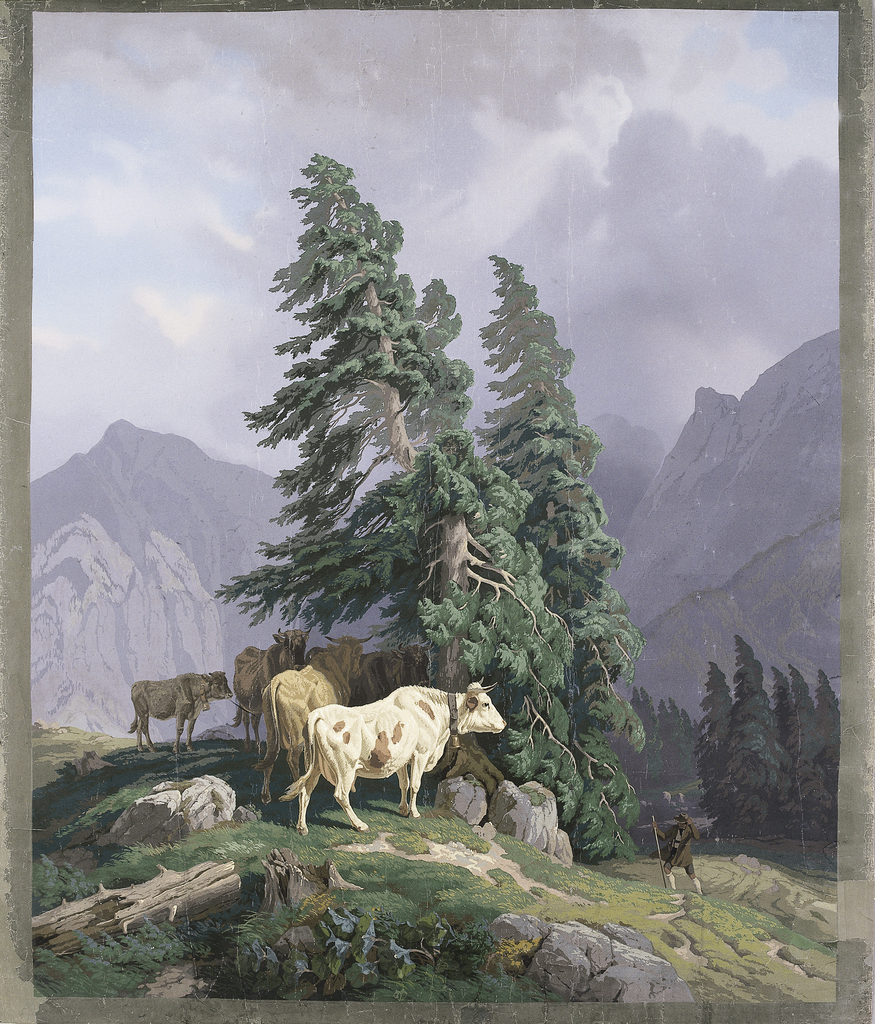Scenic wallpapers were the epitome of block-printed wallpapers, requiring thousands of wood blocks to print a non-repeating scene that could wrap a room in a continuous landscape view. Scenic wallpapers were introduced around 1804 and remained popular as new scenes were added until the 1860s. Around the 1840s, a new style emerged that altered the scenic landscape format through the introduction of decors, also known as fresco papers. While scenic papers offered a continuous view of natural wonders or mythological tales, decors were more architectural: the landscapes were treated more like works of art set within a heavy framework of simulated ornate moldings and wood carvings that replicated pilasters, crown moldings, or dadoes.
L'Orage is a landscape that simulates a painting created as part of a decor. The effect is similar to viewing a beautiful landscape through an ornate window frame. While many of the frescoes incorporated exotic landscape scenes, others recreated park settings or sculptural effects. The wallpaper manufacturers hired well-known artists to create these landscape scenes, which then could be reproduced with wood blocks. L’Orage was originally painted by Robert Eberle, a painter of landscapes and animals, and his work was subsequently translated into a block-printed design by Eugène Ehrmann.
It is amazing that L’Orage is printed on a single sheet of paper, measuring 92 x 76 inches. Only 40 years earlier, wallpaper was still being made by hand in sheets measuring about 16 x 20 inches, which were then pasted together to form rolls. This scene required 193 woodblocks to print, and could be used to alternate with two other scenes in an architectural framework.
L’Orage was produced by Zuber & Cie, one of the oldest extant wallpaper companies in France. Founded in 1797, Zuber continues to print wallpapers today, including a number of scenic wallpapers still printed with the original woodblocks.
